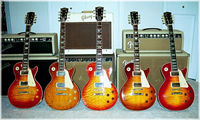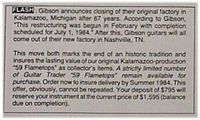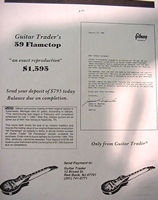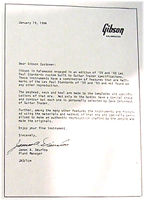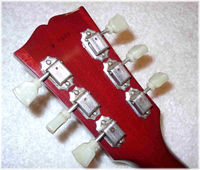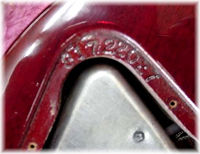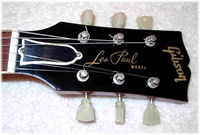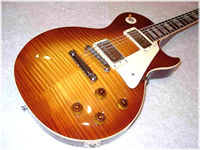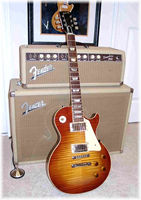|
There
have been several writings about the history of reissue Les Pauls from
the 70's and 80's that attempted to emulate the features of the legendary
1959 Les Paul. The Strings and Things Reissue marked the beginning of
the reissue craze, although only 28 were produced from 1975-78. In 1978,
Jimmy Wallace began ordering Les Pauls with flame maple tops, mostly for
Japanese customers. In 1979, possibly due to rivalry between the Kalamazoo
plant and the Nashville plant, the Les Paul KM, or "Kalamazoo Model",
was born. Although most of the 1,500 KMs issued had plain sunburst tops
and other features that didn't mimic the originals, a limited number were
produced with flame tops, most of which were reported to go to Japan.
The Nashville plant released the Heritage 80 Les Paul in 1980, with three
models (Standard, Elite, and Award). The Standard had a three piece neck,
rosewood fingerboard, and flame top, the Elite with one piece neck, ebony
fingerboard and quilt top, and the Award with flame top and gold hardware.
The Heritage 80's, while fine guitars with pickups designed by Tim Shaw,
did not closely emulate their 1959 cousins in cutaway shape, tuners, hardware,
weight, and many other details and, in the case of the Standard, the three
piece neck. In 1982, Leo's Music in Oakland, California, and Guitar Trader
in Red Bank, New Jersey, began ordering reissues with more accurate specs
for body shape, tuners, hardware, and neck shape to emulate the coveted
1959 Les Paul.
|
